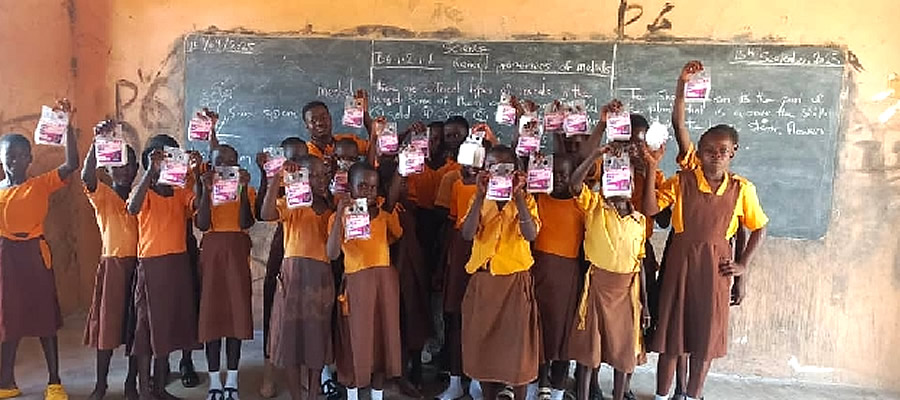
The proportion of the employed increases with increasing age and is highest for the 35-59 age group (39.2%). The proportion recorded by the 60 years and older age group (13.7%) is the least. The combined proportions for the youthful age groups 15-24 years and 25-34 years, who are available to work for many more years before reaching retirement age, is 47.1 percent. This indicates that, in term of age composition, the region has a relatively large workforce that can be harnessed for development activities. The general pattern of increases in employment with advancing age is replicated for both males and females. There are no significant differences between males and females in the proportion of the employed population in the various age groups.
In the region, the employment rate is 71.8 percent of the total population 15 years and older. The rate ranges from a low of 64.6 percent in the Bolgatanga Municipal District to 78.0 percent in the Bawku West District.
In each district, the urban employment rate is consistently lower than the rate for the rural areas. The rates for urban areas are generally below seventy percent and range from 55.2 percent in the Builsa District to 74.3 percent in the Talensi/Nabdam District. Rural employment rates are above seventy percent in each district and range from 70.6 percent in the Bolgatanga Municipal District to 79.6 percent in the Bawku Municipal District.
The distribution of the unemployed population 15 years and older by age and sex, indicates that the proportion of the unemployed decreases with increasing age. It is highest (45.2%) for the youngest age group 15-24 years and reduces by almost 17 percentage points to 28.5 percent for the age group 25-34 years. It again drops by 12 percentage points to 16.5 percent for the age group 35-59 years. The combined proportion for the age groups 15-24 years and 25-34 years is 73.7 percent indicating that almost three out of every four unemployed are young. In this predominantly peasant labour intensive agricultural economy, if the regional economy does not diversify and grow rapidly, and are not creates jobs sufficiently to match the demand. There will be a constant pool of unemployed labour. The already existing proportion of unemployed may be a factor in current and future social and economic unrest in the region.
The general pattern of reductions in the proportion in unemployment with increasing age is replicated for both males and females. However, there are some noticeable differences between males and females. The proportion of unemployed youth 15-24 years is about the same for both males and females. From age 35 years onwards, the proportions unemployed are slightly higher for females. For the age group 25-34 years, the proportion is higher for males.
In the region, the unemployment rate is 2.5 percent of the total population 15 years and older. The rates range from the low of 1.4 percent in Bawku West District to 4.3 percent in the Bolgatanga Municipal District. The unemployment rate of 5.1 percent in the urban areas is three times higher than the rate of 1.8 percent among rural communities.
In each district, urban unemployment is consistently higher than rural unemployment, and generally, the urban rates are at least twice those of rural areas. Urban unemployment ranges from 1.7 percent in the Talensi/Nabdam District to almost one out of every ten of the population in the Garu/Tempane District 9.7%). A reason for the higher urban unemployment may be the fact that the industrial activities in the urban areas are a little more outside the capacities and capabilities of urban dwellers because they require training and specific skills.
Rural unemployment rates in the districts are below the regions average of 2.5 percent in almost all the districts. The rates range from 1.2 percent in the Garu/Tempane District to 2.5 percent in the Bolgatanga Municipal District.
The distribution of the economically not active population 15 years and older by age and sex is based on four broad age groups. This can result in the loss of some age-specific data. The proportion of the population who are economically not active is highest (57.0%) in the youngest age group 15-24 years. It reduces to as low as 10.3 percent in the age groups 25-34 years and 35-59 years. The proportion rises again at age 60 years and over to 22.4 percent. The size of the proportions in the various age-groups reflects more or less the categories of the population who are inactive and the age groups on which they are generally found. For example, full-time students are generally in the age-group 15-24 years and retired persons are usually 60 years and older.
The pattern of reductions in the size of the proportions economically not active with advancement in age is replicated for both males and females. There are significantly more economically inactive males in the age group 15-24 years (66.7%) than females (49.5%). However for the age groups 35-59 years and 60 years and older, the percentage of economically not active females is higher than that of males.
In the region, the economically not active rate is about one quarter of the population aged 15 years and older (25.7%). The rate is highest in the Bolgatanga Municipal District (31.1%), followed by the Kasena Nankana East District (29.5%). This may be due to the fact that these two districts have most of the second and third cycle educational institutions with the dominant category of the economically not active population -that is students.
The economically inactive population rate is generally higher in the urban areas (33.3%) compared to the rural areas (23.4%). The region?s pattern is replicated in each district. In the Bawku Municipal District, for example, the rate for urban communities is 33.6 percent, compared to less than twenty percent (19.0%) in the rural communities.
Date Created : 11/30/2017 5:15:40 AM












 facebook
facebook
 twitter
twitter
 Youtube
Youtube
 +233 593 831 280
+233 593 831 280 0800 430 430
0800 430 430 GPS: GE-231-4383
GPS: GE-231-4383 info@ghanadistricts.com
info@ghanadistricts.com Box GP1044, Accra, Ghana
Box GP1044, Accra, Ghana